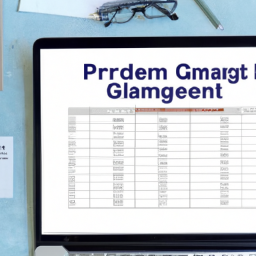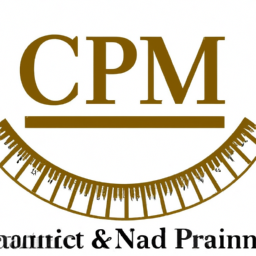Are you the captain steering your project ship to success? Just like a skilled navigator, you must chart a course that avoids the treacherous waters of skill gaps. In the world of project resource management, identifying and addressing these gaps is crucial for smooth sailing towards project completion.
Skill gaps occur when there is a mismatch between the skills required for a project and the skills possessed by the team members. As the project leader, it is your responsibility to bridge these gaps and ensure that your team has the necessary skills to deliver results.
This article will guide you through the process of identifying skill gaps, developing a training plan, seeking external expertise, implementing knowledge sharing initiatives, and continuously monitoring and evaluating the progress. With these strategies in your arsenal, you will be equipped to navigate your project towards success, with a crew that is skilled and ready for any challenge that comes their way.
Key Takeaways
- Skill gaps in project resource management can hinder project success.
- Conducting a skills assessment is crucial for identifying skill gaps.
- Addressing skill gaps improves project performance and enhances team collaboration.
- Implementing knowledge sharing initiatives fosters a culture of continuous learning.
Conduct a Skills Assessment
Let’s dive right into assessing the skills of your project team! Skill assessment techniques are crucial for determining the strengths and weaknesses of your team members.
By conducting a comprehensive evaluation, you can identify the skills that are essential for the successful completion of your project. This process involves analyzing the current skill set of each team member and comparing it to the required skills for the project.
The importance of skill gap analysis cannot be overstated. By understanding the gaps in your team’s skills, you can develop strategies to address them, such as training programs or hiring additional resources. This will ensure that your project team is equipped with the necessary skills to meet project objectives.
Now let’s move on to how to identify skill gaps and bridge them effectively.
Identify Skill Gaps
To effectively pinpoint areas for improvement, it’s essential to evaluate the existing levels of expertise. Skill gap analysis is a crucial step in project resource management as it helps identify the specific skills that are lacking within the team.
Here are four key reasons why skill gap analysis is important:
-
Efficient resource allocation: By identifying skill gaps, you can allocate resources more effectively, ensuring that the right people are assigned to the right tasks.
-
Training and development focus: Skill gap analysis helps you prioritize training and development efforts, ensuring that resources are invested in areas that’ll have the greatest impact on project success.
-
Improved project performance: Addressing skill gaps directly contributes to improved project performance by equipping team members with the necessary skills to excel in their roles.
-
Enhanced team collaboration: Identifying skill gaps enables you to foster collaboration within the team by matching individuals with complementary skills.
By conducting a skill gap analysis, you can lay the foundation for developing a training plan that’ll bridge these gaps and elevate the capabilities of your team.
Develop a Training Plan
You can create an extraordinary training plan that will skyrocket the skills of your team members. To ensure the effectiveness of your training plan, it is crucial to create learning modules that align with the identified skill gaps. These modules should be designed to address specific areas of improvement for each team member. By tailoring the training to their individual needs, you can maximize their learning potential. Additionally, it is important to measure the effectiveness of your training plan. This can be done through assessments and evaluations to track the progress and identify any further skill gaps that may arise. By continuously refining and improving your training plan based on these assessments, you can ensure that your team members are consistently developing their skills. As you move forward into the subsequent section about ‘seeking external expertise,’ remember to consider the valuable insights and perspectives that external trainers or consultants can bring to further enhance your training plan.
Seek External Expertise
Engage external experts to bring fresh perspectives and valuable insights to enhance your team’s training plan. External partnerships and hiring consultants can provide your team with specialized knowledge and expertise that may not be readily available internally. These experts can offer a different viewpoint and help identify skill gaps that may have been overlooked.
By leveraging their experience, you can ensure that your training plan is comprehensive and tailored to address the specific needs of your team.
When seeking external expertise, it’s important to carefully evaluate potential partners or consultants to ensure they have the necessary qualifications and experience. Look for individuals or organizations that have a proven track record in the area you need assistance with. Additionally, consider the cost and time implications of engaging external experts and make sure it aligns with your project’s budget and timeline.
Implementing knowledge sharing initiatives will further enhance your team’s ability to bridge skill gaps and develop new competencies.
Implement Knowledge Sharing Initiatives
Creating a culture of knowledge sharing within your team will foster an environment where ideas flow freely and information is exchanged seamlessly, leading to the development of new competencies and the bridging of skill gaps. To instill this culture, consider implementing the following initiatives:
-
Creating mentorship programs: Pairing experienced employees with those who have skill gaps can provide valuable guidance and support, helping them acquire new skills and knowledge.
-
Encouraging cross-functional collaboration: Encourage employees from different departments to work together on projects, allowing them to learn from each other’s expertise and perspectives.
-
Hosting regular knowledge sharing sessions: Organize regular meetings or workshops where team members can share their knowledge, experiences, and best practices, fostering a collaborative learning environment.
-
Utilizing online platforms: Implementing online platforms or tools, such as internal wikis or forums, can facilitate the exchange of knowledge and encourage continuous learning.
By implementing these knowledge sharing initiatives, your team can develop a culture of continuous learning and improvement. This will enable you to address skill gaps effectively and adapt to the changing needs of your projects.
Moving forward, it’s important to continuously monitor and evaluate the effectiveness of these initiatives in bridging skill gaps and adjust them accordingly.
Continuously Monitor and Evaluate
To effectively implement knowledge sharing initiatives, it’s crucial to continuously monitor and evaluate their impact. By doing so, you can gauge the progress made towards closing skill gaps and identify any areas that need improvement. Regular evaluation allows you to assess the effectiveness of your strategies and make necessary adjustments to ensure optimal results.
To evaluate progress, you can use various methods such as conducting surveys, holding feedback sessions, or analyzing performance metrics. By actively seeking feedback from team members and stakeholders, you can gain valuable insights into the effectiveness of your knowledge sharing initiatives. This information can then be used to identify any skill gaps that still exist and develop targeted strategies to address them.
It’s important to be proactive in adjusting your strategies based on the evaluation results to ensure continuous improvement and ultimately achieve success in closing skill gaps within your project team.
Frequently Asked Questions
How can I effectively communicate the importance of skills assessment to my team?
To effectively communicate the importance of skills assessment to your team, emphasize the benefits of feedback and recognition.
Explain that by identifying skill gaps, you can provide targeted training and development opportunities to enhance their capabilities.
Highlight how this process fosters effective team collaboration, as it ensures that everyone has the necessary skills to contribute to the project’s success.
Stress that skills assessment is a vital tool for maximizing individual and team performance, ultimately leading to project success.
What are some common challenges organizations face when identifying skill gaps?
When identifying skill gaps, organizations face challenges in implementation and measuring progress. It’s like navigating through a dense forest with limited visibility.
The first challenge is ensuring the skill assessment process is effectively implemented across the organization. This requires buy-in from all stakeholders and clear communication.
Additionally, measuring progress can be difficult as it requires establishing benchmarks and tracking improvement over time.
By addressing these challenges head-on, organizations can successfully identify and close skill gaps.
Are there any recommended strategies for developing a training plan that aligns with specific skill gaps?
To develop a training plan that aligns with specific skill gaps, you need to first identify the training needs of your team. Assess the current skill levels and determine where the gaps lie.
Once you have identified the skill gaps, you can then design a training program that targets those specific areas for skill development. This will ensure that your team receives the necessary training to bridge the gaps and enhance their skills effectively.
How can organizations ensure the quality and relevance of external expertise when seeking external help?
To ensure expertise quality and evaluate external support, organizations should take several steps.
First, thoroughly research and vet potential external experts or consultants to ensure their credibility and expertise. This can include reviewing their qualifications, past projects, and client testimonials.
Additionally, conducting interviews or meetings with potential experts can help assess their knowledge and relevance to the organization’s needs.
Finally, seeking recommendations or references from trusted sources can provide further assurance of the quality and relevance of external expertise.
What are some key metrics or indicators to track when monitoring and evaluating the effectiveness of knowledge sharing initiatives?
To effectively monitor and evaluate the effectiveness of knowledge sharing initiatives, tracking metrics and indicators is crucial. These metrics act as beacons, guiding you through the vast sea of information. They reveal the impact and success of your initiatives, highlighting areas of improvement and growth.
Key indicators to consider include engagement levels, knowledge retention rates, and the implementation of shared knowledge into practical applications. By diligently tracking these metrics, you gain valuable insights for evaluating the effectiveness of your knowledge sharing initiatives.
Conclusion
In conclusion, managing project resources effectively requires a proactive approach. By conducting a thorough skills assessment and identifying skill gaps, you can develop a targeted training plan to address those deficiencies.
Seeking external expertise and implementing knowledge sharing initiatives can also help bridge the gap. It’s crucial to continuously monitor and evaluate the progress to ensure the success of your project.
Remember, a well-rounded team is the key to achieving project goals and delivering exceptional results.























